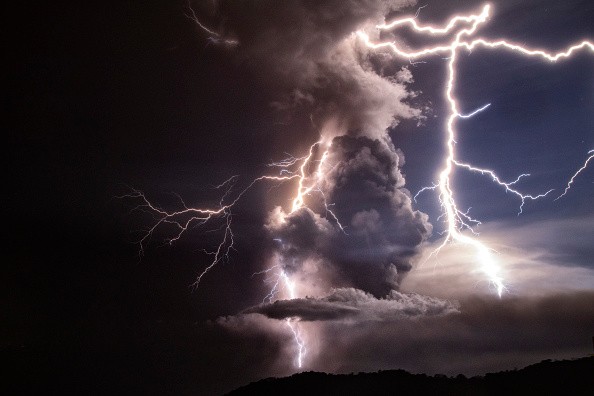Scientists from USGS, NOAA, and Vaisala conducted a study which was published in the Geological Society of America journal Geology on January 18.
The study reveals how lightning detection has improved scientific understanding of explosive volcanism and how this can be used to better predict volcanic eruptions.

How Explosive Eruptions Produce Lightning
The perfect storm-explosive eruptions can produce lightning observed around the world, lead author Alexa Van Eaton said.
According to Phys.org, the Taal volcano eruption in the Philippines in January 2020 demonstrated how a massive volcanic explosion became electrified, releasing thousands of cloud-to-ground lightning strikes over several hours.
Due to these flashes, researchers were able to learn more about how the eruption behaved. The electrical activity in the volcanic ash plume lit up sensors the moment it reached high enough to freeze, according to Van Eaton.
In contrast to other remote sensing methods with lengthier lag times, scientists can receive the lightning data super-fast, argues Van Eaton, as radio waves generated by lightning move at the speed of light.
Hundreds of photos uploaded on social media, as well as satellite images, were also used by the researchers.
This eruption occurred in a large urban area, thus individuals were able to capture images of volcanic lightning as it was happening. As Van Eaton and colleagues put it, the images and films reveal an electrically charged zone beneath the umbrella cloud.
Predicting Volcanic Eruption
The Taal volcano in the Philippines erupted in hazardous levels of ash and gases in January 2020. From 12 to 13 January 2020, Japan's Himawari-8 satellite recorded the growth and spread of the volcanic plume.
OMPS data from the Goddard Earth Sciences Data and Information Services Center was used to create this NASA Earth Observatory image by Lauren Dauphin.
Japan Meteorological Agency (JMA) imagery was used to create a natural-color animation. The Japan Meteorological Agency is to be credited. In Van Eaton's opinion, camera perspectives from various angles may do far more to characterize an eruption.
Volcanic lightning, on the other hand, helps researchers spot the early warning indications of ash threats to planes. However, Van Eaton, notes that studies like this one using remote sensing only provide a broad-brush view of an eruption.

Explosive Volcanism
Van Eaton identifies the ash plume's tiny sparks as an area for future investigation. When scientists discovered that the high-altitude umbrella cloud was crawling with these tiny blue streamers of ionized air, they were astonished.
"It's still an enigma how these little ribbons of ionized air relate to powerful lightning." says the lead author of the study.
The Hunga Tonga-Hunga Ha'apai undersea volcano in Tonga erupted on January 15, 2022, with a catastrophic eruption. The entire Pacific Ocean was hit by a tsunami, and a massive ash cloud spewed above it, causing unprecedented levels of volcanic lightning.
The Geology research by Van Eaton and colleagues describes how volcanic plumes rich in water become electrically charged.
For more news, updates about volcanic eruption and similar topics don't forget to follow Nature World News!
© 2025 NatureWorldNews.com All rights reserved. Do not reproduce without permission.





